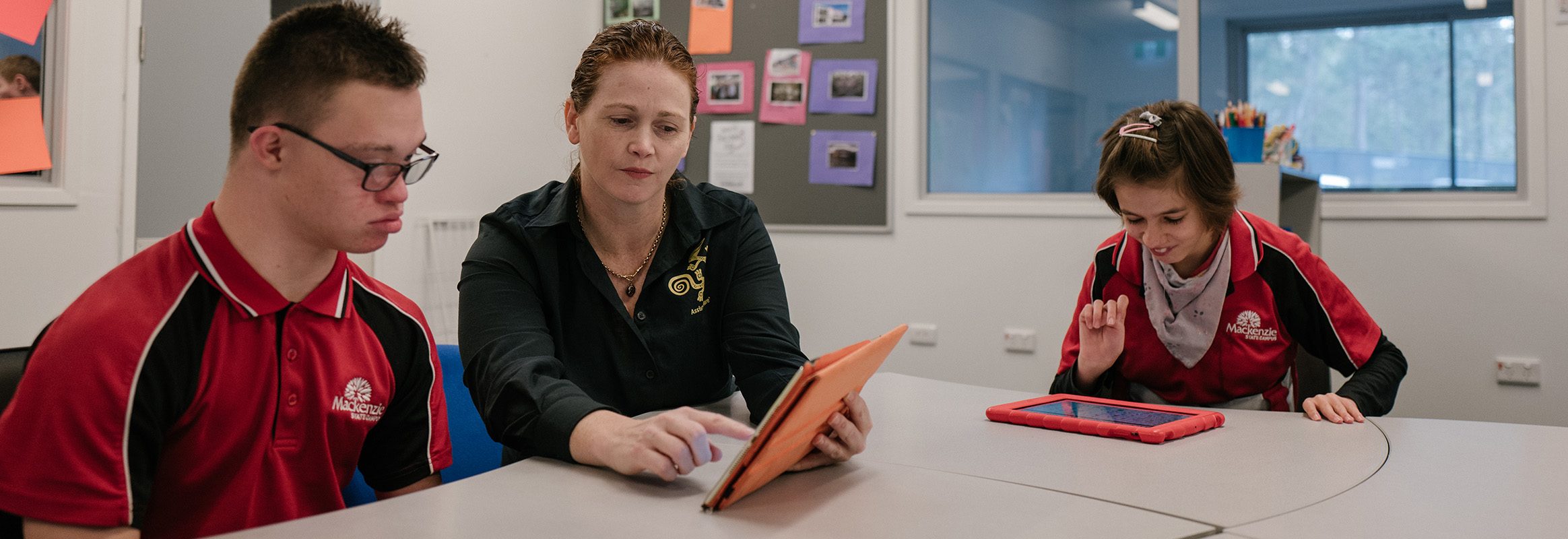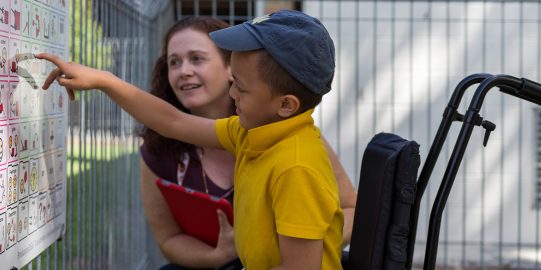In some environments, there may be different Augmentative and Alternative Communication (AAC) in use. Every person who uses AAC is different and will have different communication needs. They may use different AAC systems.
People supporting those AAC users can feel stuck. How can they integrate different systems of AAC into the daily routine? How can they swap from one system to another? How do we model on more than one system? Wouldn’t it be easier if everyone used the same AAC system?
One size does not fit all
It is important to realize that one size or type of AAC does not fit every person. Every individual needs an AAC system based on their communication and access needs.
Finding the right AAC tool starts with:
- Selecting a robust AAC system based on core words, fringe vocabulary and an alphabet.
- Starting with a grid size that the AAC user can see and touch.
- Then, personalizing each AAC system for the individual.
When we follow these steps, we find that each AAC user may need a different AAC system. While supporting different AAC systems in the same environment may not be the easiest choice, it is definitely the best choice. Especially, when AAC users have different needs. AAC systems must meet the needs of their users.
Here is an example of a typical classroom. One student may have a physical impairment and he needs to access his AAC system using eye gaze. Another student may use a communication book. Other students may have an AAC tools on iPads. However each of these students have a different grid size depending on their vision and fine motor skills. Each student has a different system. The picture or symbol supports may even be different.
Know all the AAC systems
Teams need to take the time to get familiar with the AAC systems being used. This may involve “playing” with the vocabulary. They need time to become more comfortable with the AAC. And confident with where words are located.
Another strategy is to plan for words to model for a particular activity. The AssistiveWare Core Word Classroom Core Word Planners have suggestions for many common school and home activities. Make guides for where the words are on each system. These can be used for practice and for reference during the activity.
It can also be helpful to have paper-tech versions of the AAC systems. Print and laminate the home page and some key pages. Everyone can use these to practice modeling words. Proloquo2Go Crescendo Core word boards are handy to print out and practice on.
The better we know the systems, the more we can model words and sentences. Modeling language across different AAC systems will take time. At first it may be slow. But the more we do, the easier it will become. With time and confidence comes flexibility. The flexibility to fast switch from one AAC to the next.
Get the team on board
It helps to have the team on board.
Support all members of the team to get to know the AAC system. Have regular meetings to discuss successes and difficulties. Have practice sessions to take time “playing” with the system. Dedicate 5-10 minutes of each staff meeting to finding words on the AAC systems. Practice chatting using the AAC.
Can different team members help model across different devices?




